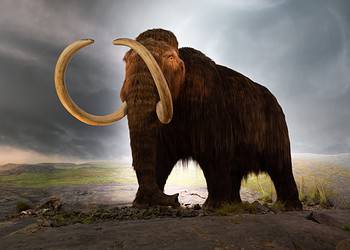New research found that two dinosaur skeletons believed to belong to a previously-unknown species were, in fact, immature tyrannosaurus rexes.
Back in the early 2000s, members from the Burpee Museum of Natural History in Rockford, Illinois collected two fossil skeletons from Carter County, Montana. These specimens, christened “Jane” and “Petey,” were about as tall as a draft horse and about two times as long. Their bones hinted at a predator species but, due to their size, it was believed we were looking at a diminutive relative of the species.

Image credits Scott A. Williams.
Now, new research shows that both Jane and Petey were, in fact, teenage tyrannosaurs, aged 13 and 15.
Terrible teens
“Historically, many museums would collect the biggest, most impressive fossils of a dinosaur species for display and ignore the others,” said Holly Woodward, a Ph.D. at Oklahoma State University Center for Health Sciences, who led the study.
“The problem is that those smaller fossils may be from younger animals. So, for a long while we’ve had large gaps in our understanding of how dinosaurs grew up, and T. rex is no exception.”
The team looked within the fossilized bones to determine the age at which these animals died. This technique is known as paleohistology and involves the analysis of bone microstructures of a particular specimen to determine how fast it grew and at what age it stopped. To do this, the team took thin slices from the leg bones of both specimens and investigated them at high magnification.

Image credits Woodward et al., (2020), Science Advances.
Jane and Petey met their end at 13 and 15 years old, respectively, the team reports. Determining their age also helped clarify the issue of species as well. Previously, the fossils were believed to belong to a pygmy relative of the tyrannosaur known as Nanotyrannus.
The research does help us better understand the lives of these immense predators. Woodward points out that it took T. rex up to twenty years to reach adult size, and as such they probably experienced dramatic physical changes as they matured. She adds that Jane and Petey, being juveniles, were likely lightning-fast and used their sharp, blade-like teeth to tear flesh. Adults, on the other hand, were likely much more cumbersome and used their massive jaws to crack open bones through sheer force.
One interesting find the team made is that T. rex could work around periods with scarce food by simply not growing as much. When food became plentiful again, it would grow rapidly, they add.
“The spacing between annual growth rings record how much an individual grows from one year to the next. The spacing between the rings within Jane, Petey, and even older individuals is inconsistent — some years the spacing is close together, and other years it’s spread apart,” said Woodward.
Still, as evidenced by their growth spurts, even in early life T. rex was a formidable predator.
The paper “Growing up Tyrannosaurus rex: histology refutes pygmy ‘Nanotyrannus’ and supports ontogenetic niche partitioning in juvenile Tyrannosaurus” has been published in the journal Science Advances.






